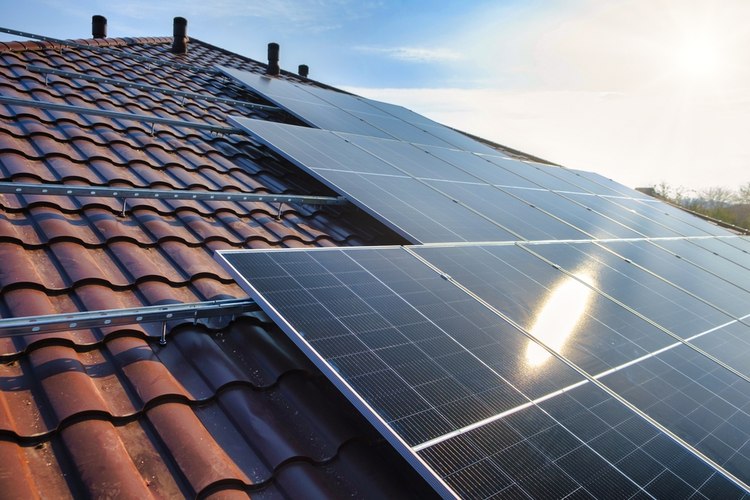Solar Panels in 2025: Powering Homes With Smarter Energy
Solar panels are more efficient, affordable, and accessible in 2025 than ever before. Homeowners are turning to solar to cut energy bills, reduce environmental impact, and increase property value. Thanks to modern technology and flexible financing options, switching to solar is now a practical and rewarding step for more households.

How New Technology Makes Panels More Powerful
Solar panel technology has reached impressive new heights in 2025, with efficiency rates now commonly exceeding 22% for residential installations. Advanced photovoltaic cells, including perovskite-silicon tandem cells and improved monocrystalline designs, capture more sunlight and convert it into usable electricity than previous generations. These technological improvements mean homeowners can generate more power from smaller roof spaces, making solar viable even for homes with limited installation areas.
Smart inverters and micro-inverters now optimize energy production at the individual panel level, ensuring maximum efficiency even when some panels experience shading or debris. Battery storage integration has also become more seamless, allowing homeowners to store excess energy during peak production hours and use it when needed most. These innovations collectively represent a significant leap forward in residential solar capability.
Why Affordability and Incentives Drive Adoption
The financial landscape for solar installations has transformed dramatically, making renewable energy accessible to a broader range of homeowners. Federal tax credits continue to provide substantial savings, while many states offer additional rebates and incentives that further reduce upfront costs. Net metering programs allow homeowners to sell excess energy back to the grid, creating ongoing revenue streams that offset installation expenses.
Financing options have also evolved to accommodate different budgets and preferences. Solar leasing programs, power purchase agreements, and low-interest loans enable homeowners to start saving on energy costs immediately without large upfront investments. Many installations now pay for themselves within 6-8 years, after which homeowners enjoy decades of virtually free electricity generation.
Real-World Cost Analysis for Solar Systems
Understanding the actual costs associated with solar installations helps homeowners make informed decisions about their energy future. Installation prices vary based on system size, equipment quality, local labor costs, and available incentives. The typical residential solar system ranges from 4kW to 10kW, with costs reflecting both equipment and installation services.
| System Size | Average Cost (Before Incentives) | After Federal Tax Credit | Monthly Savings Estimate |
|---|---|---|---|
| 4kW System | $12,000 - $16,000 | $8,880 - $11,840 | $80 - $120 |
| 6kW System | $18,000 - $24,000 | $13,320 - $17,760 | $120 - $180 |
| 8kW System | $24,000 - $32,000 | $17,760 - $23,680 | $160 - $240 |
| 10kW System | $30,000 - $40,000 | $22,200 - $29,600 | $200 - $300 |
Prices, rates, or cost estimates mentioned in this article are based on the latest available information but may change over time. Independent research is advised before making financial decisions.
Leading Solar Providers and Their Offerings
Major solar companies have expanded their services and improved their products to meet growing demand. Tesla Solar offers sleek panels and integrated Powerwall battery systems, while Sunrun provides comprehensive leasing options with professional monitoring services. SunPower focuses on high-efficiency panels with extended warranties, and local installers often provide competitive pricing with personalized service for homeowners in specific regions.
Each provider offers different advantages, from cutting-edge technology to flexible financing arrangements. Homeowners benefit from comparing multiple quotes and evaluating factors beyond just price, including equipment quality, warranty terms, and company reputation. Local solar installers frequently match or beat national pricing while providing more personalized customer service and faster response times for maintenance needs.
Environmental and Property Value Benefits
Solar installations deliver measurable environmental benefits while increasing home values. A typical residential solar system eliminates 3-4 tons of carbon emissions annually, equivalent to planting over 100 trees each year. This environmental impact appeals to environmentally conscious homeowners and contributes to broader community sustainability goals.
Property values typically increase by 4% when solar panels are installed, according to real estate studies. Homes with solar systems sell faster than comparable properties without renewable energy features. Modern solar installations are designed to complement architectural styles rather than detract from curb appeal, using sleek mounting systems and streamlined designs that integrate seamlessly with rooflines.
Solar panels in 2025 represent a mature, reliable technology that offers compelling financial and environmental advantages for homeowners. With improved efficiency, attractive financing options, and proven long-term benefits, solar energy has evolved from an alternative option to a mainstream choice. The combination of technological advancement and economic incentives makes this an opportune time for homeowners to explore solar energy solutions that can provide decades of clean, cost-effective power generation.




